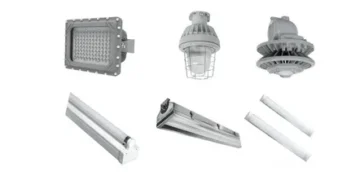For many, the Rubik’s Cube is a symbol of both fascination and frustration. It’s often seen as a puzzle only geniuses can crack. But what if I told you that how to solve a Rubik’s Cube isn’t as hard as it seems? With the right beginner-friendly tricks, you can solve it without stress—even if you’ve never done it before.
In this ultimate guide, I’ll walk you through the easiest method to solve the Rubik’s Cube step by step. Whether you’re a complete beginner or someone who gave up after countless attempts, this guide will make the process simple and enjoyable.
1. Understanding the Cube: Know the Basics
Before jumping into the solution, it’s essential to understand how the Rubik’s Cube works. The standard 3×3 cube consists of:
- 6 faces, each with 9 squares of a single color when solved.
- Center pieces: Fixed and indicate the face’s final color.
- Edge pieces: 12 pieces with two colors each.
- Corner pieces: 8 pieces with three colors each.
Key Insight: The center pieces never move. They define the color of each face. For example, if the center of one side is white, that face will be white when solved.
2. The Beginner’s Method: Simplifying the Puzzle
The easiest way to solve a Rubik’s Cube is by using the layer-by-layer method. This beginner-friendly approach breaks down the cube into manageable steps:
- Solve the White Cross.
- Complete the First Layer Corners.
- Solve the Middle Layer Edges.
- Create the Yellow Cross.
- Position Yellow Corners.
- Finish the Last Layer.
Let’s break down each step in detail.
3. Step-by-Step Trick to Solve a Rubik’s Cube
Step 1: Solve the White Cross
Start by forming a white cross on one face. This is the foundation of the solution.
Trick: Match the white edge pieces with their corresponding center colors.
- Find a white edge piece.
- Move it until the non-white side matches the center color of that face.
- Turn the edge into the correct position.
Do this for all four edges to form a white cross.
Common Issue: If a white edge is flipped, use this algorithm:
F U R U’ R’ F’
Step 2: Complete the First Layer Corners
Next, solve the white corners to complete the first layer.
Trick: Find a corner piece with white on it. Position it below where it should go.
Use this simple algorithm until the corner falls into place:
R U R’ U’
Repeat until all white corners are correctly positioned, completing the first layer.
Step 3: Solve the Middle Layer Edges
With the first layer done, move on to the middle layer edges.
Trick: Look for edge pieces without yellow. Position them to match the center color of one face.
Use these algorithms to insert edges into the middle layer:
- Edge goes to the right:
U R U’ R’ U’ F’ U F - Edge goes to the left:
U’ L’ U L U F U’ F’
Repeat until all middle layer edges are correctly placed.
Step 4: Create the Yellow Cross
Now, focus on the yellow face. The goal here is to form a yellow cross.
Trick: Depending on the yellow pattern, apply the following algorithm:
- Dot: F R U R’ U’ F’ (Repeat until you get an L shape.)
- L Shape: F U R U’ R’ F’
- Line: F R U R’ U’ F’
Keep repeating until the yellow cross appears.
Step 5: Position Yellow Corners
After the yellow cross, position the yellow corners correctly, even if they’re not oriented properly.
Trick: Find a correctly placed corner (or any corner if none are correct).
Use this algorithm to cycle corners:
U R U’ L’ U R’ U’ L
Repeat until all corners are in their correct positions.
Step 6: Solve the Final Layer Edges
The last step is to permute the final layer edges, completing the cube.
Trick: Identify if edge pieces need to swap positions.
- Adjacent swap:
F2 U L R’ F2 L’ R U F2 - Opposite swap:
M2 U M2 U2 M2 U M2
After one or two cycles, the cube will be solved.
4. Cube Notation: Understanding Move Symbols
To follow algorithms accurately, you must understand cube notation:
- R: Right face clockwise
- R’: Right face counterclockwise
- U: Upper face clockwise
- U’: Upper face counterclockwise
- F: Front face clockwise
- F’: Front face counterclockwise
- D: Down face clockwise
- D’: Down face counterclockwise
- L: Left face clockwise
- L’: Left face counterclockwise
Learning these moves will make it easier to follow any solving guide.
5. Quick Tips to Solve Without Stress
- Stay Calm: The cube isn’t as hard as it looks once you know the steps.
- Practice Algorithms Slowly: Speed comes with accuracy.
- Use Finger Tricks: Turn the cube with your fingers, not your whole hand.
- Avoid Random Moves: Stick to the method. Random moves make things worse.
- Break It Down: Focus on one step at a time.
6. Common Mistakes to Avoid
Even with the right tricks, beginners often face challenges. Here’s how to avoid common pitfalls:
- Misaligned Cross: Ensure the white cross matches the center colors.
- Incorrect Middle Edges: Always check edge orientation before insertion.
- Corner Twists: If a corner seems twisted, repeat R U R’ U’ until it aligns.
- Skipping Steps: Don’t rush. Each step builds on the previous one.
7. How Long Will It Take to Master?
With consistent practice, most beginners can solve the cube in 5–10 minutes within a few days. After mastering the beginner’s method, you can explore advanced techniques like CFOP (Cross, F2L, OLL, PLL) to achieve faster times.
Typical Progress:
- First solve: 10–20 minutes
- After a week: 5–10 minutes
- With regular practice: 2–5 minutes
8. Maintaining Your Cube for Smooth Solving
A well-maintained cube makes solving much easier. Follow these tips:
- Lubricate the Cube: Use silicone-based lubricant for smoother turns.
- Adjust Tension: Balance the tightness for speed and stability.
- Clean Regularly: Dust can make turning stiff.
- Upgrade to a Speedcube: Brands like Gan, MoYu, and DianSheng offer fast, smooth cubes.
9. What Comes Next? (Advanced Tricks and Speedcubing)
Once you’ve mastered the beginner’s method, you can explore:
- CFOP Method: Used by speedcubers for faster solves.
- 2-Look OLL and PLL: Simplified algorithms for the last layer.
- Advanced Finger Tricks: Improve efficiency and speed.
- Speedcubing Competitions: Test your skills against others.
10. Conclusion
Learning how to solve a Rubik’s Cube doesn’t have to be stressful. By following this beginner-friendly method, breaking down each step, and practicing regularly, you’ll find yourself solving the cube faster and with more confidence.
Remember, the key is understanding patterns, practicing algorithms, and staying patient. In no time, you’ll be impressing friends and family with your cube-solving skills.


























